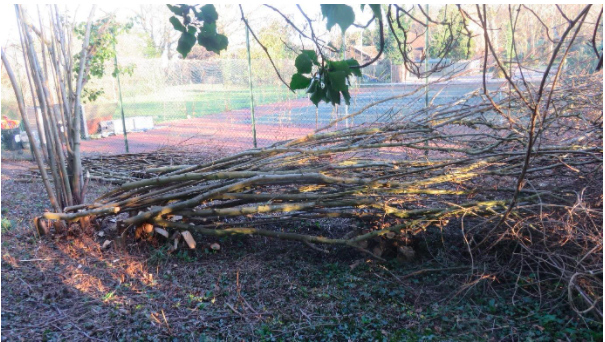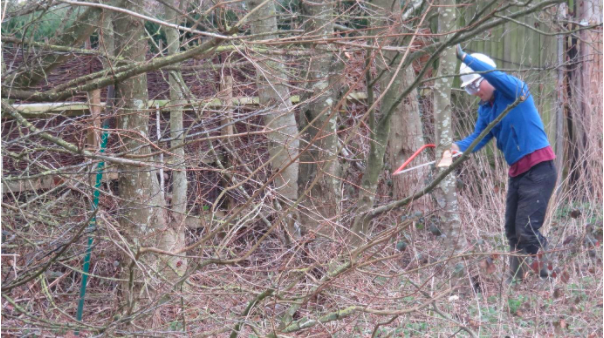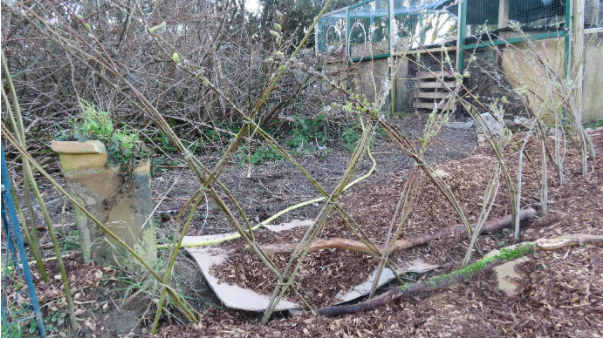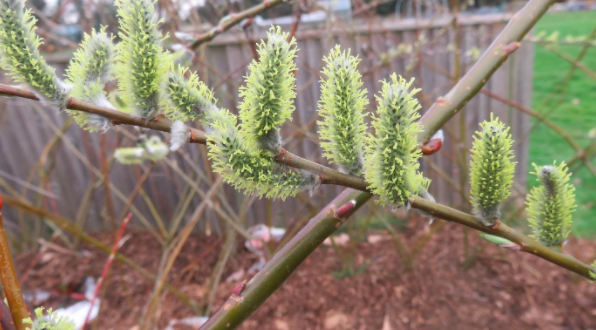bY aLEX sYLVESTER, sADEH’S LAND MANAGER.
The Beast from the East may have brought sub-zero temperatures to Sadeh, but there was no freeze in land work in February.
Fanatically fedging in February
A spate of sawing soon warms up numb fingers – that or standing in front of our roaring wood burner!

Late winter is the perfect time for tree work, whilst they still stand dormant, their sap not yet rising nor the nesting season underway. We have been creating a barrier of living hazel trees behind the tennis court – to foil dogs trying to escape or locals thinking of venturing in. This is the ancient art of hedge laying – cutting small trees almost all the way until they start to split and then laying them down at a slight upward angle. The sliver of wood between the roots and the laid stem or “pleacher”, keeps the nutrients flowing, and the side-shoots which spring up along its length make for a dense hedge. Hawthorn and blackthorn are abundant in traditional hedges, so when these were laid the mass of thorny branches is just what the farmers needed to make their boundaries stockproof.
In the top field, we recently coppiced 3 Italian alder trees, to improve the structure of the woodland edge here.

Coppiced trees regrow from the base, providing firewood and sustainable building materials. Regularly coppicing trees can also extend their lifespan, keeping them in a juvenile phase of growth. And in the meantime, new open ground exposed to sunlight stimulates a profusion of woodland flowers, great for biodiversity. An interesting observation was to see how many bees were attracted on a sunny day in late February to the fallen head of the tree, lying on the ground and covered in catkins, the alder flowers. Usually they would be battling the windier conditions many metres up, but this year probably delighted to find catkins rather more accessible at ground level. It is also a visible reminder of how important our trees are – not just garden flowers – to native pollinating insects.

February has also been big on fedging. Stick recently cut willow in the ground, preferably in a sunny location, and with any luck – if the ground stays moist and the weeds are kept at bay – it should take root. A fedge is like a hedge, i.e. made of living trees, but narrower and tied together to form a rigid structure, like a fence. There are several plus points to a fedge. As well as potentially being free to assemble (we cut the willow from our neighbour’s hedge), a fedge will get stronger over time (rather than rotting and eventually falling over) and provide food (see the beautiful catkins) and habitat for wildlife. And being trees, they will draw down carbon from the atmosphere and build soil. We now have 3 willow fedges and 2 willow arches. Result!
